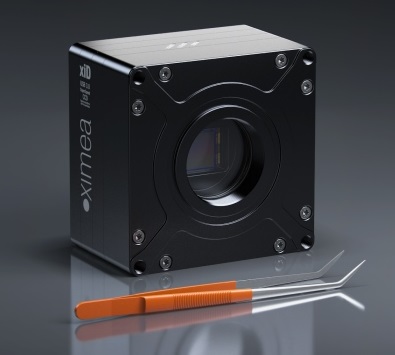MUNSTER, GERMANY, September 12, 2014. XIMEA GmbH ships xiD - USB 3.0 bus powered CCD cameras with resolutions from 2.8 to 12 Mpix. Utilizing the full potential of 4 taps of the sensor, XIMEA cameras achieve record speeds while delivering highest dynamic range and SNR performance.
It has been a while since XIMEA presented in 2011 first models of USB3 Vision camera models with CMOS sensors called xiQ. Now that they have proven to work reliably under extreme conditions and are firmly woven into the fabric of machine vision it is time to get to the next level – CCD based models with USB 3.0 called xiD.
The new line needs newest sensors and XIMEA decided to begin with unquestionable quality brought by Sony.
XIMEA’s family of xiD USB 3.0 cameras is a synergy of Sony’s "EXview HAD CCD II" sensors coupled with the legendary XIMEA’s CleanPath readout and sensor driving circuitry, resulting in a scientific imaging device with extremely low readout noise and high fidelity in color reproduction.
Utilizing "EXview HAD CCD II" pixel technology the sensor line includes such models as ICX674, ICX694, ICX814, and ICX834. This means that users can enjoy resolutions like 2.8 Megapixel, 6 Mpix, 9 MP and 12 MP with speeds 60, 30, 20, 15 fps respectively and that at 14 bits ADC.
The xiD family is featuring ICX674, ICX694, ICX814, and ICX834 sensors, with resolutions of 2.8, 6.1, 9.1 and 12 Megapixel delivering unique 60, 30, 20, 15 fps respectively, all at 14 bits per pixel.
Such remarkable readout values are achieved by taking advantage of full potential of 4TAP. All cameras support single, dual and quadruple tap readout modes of Sony sensors. For applications striving for an even higher frame rate xiD family supports overclocking modes with 4 taps and 65MHz pixel clock. In particular ICX674 based 2.8 Mpix model can run at over 70 fps.
Sophisticated tap balancing technology developed by XIMEA allows seamless multi-tap imaging at diverse lighting, exposure and temperature conditions.
As it is traditional for XIMEA, these cameras are exceptionally compact. Mainstream xiD cameras are available in robust, hard anodized housing with dimensions of 60 x 60 x 38 mm and consume a mere 4W. Thus, making it possible to run the camera from a single USB 3.0 cable alone. Optionally cameras can be delivered in unique,single board level form factor for OEM and embedded applications.
Planned is the release of Cooled version option.
Extensive software support being the standard benefit of all XIMEA cameras applies here too – xiAPI, free API/SDK which runs on Windows, Linux, Mac OS X and are compatible with more than 30 image processing libraries. The xiAPI is making deployment smooth and straightforward. Standard features of the xiD family and the xiAPI include different binning and ROI modes, external triggering and flash light synchronization.
Due to immense history of working with scientific field customers stems the proprietary extremely low readout noise architecture as well as Scientific grade overall quality that makes xiD cameras ideal for wide range of applications like: life and material sciences, microscopy, fluorescence, ophthalmology, pathology, histology, astronomy, flat panel inspection, printed circuit board (PCB) examination, intelligent traffic systems, UAV and many others.













